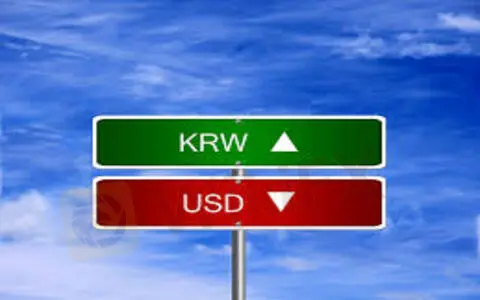简体中文
繁體中文
English
Pусский
日本語
ภาษาไทย
Tiếng Việt
Bahasa Indonesia
Español
हिन्दी
Filippiiniläinen
Français
Deutsch
Português
Türkçe
한국어
العربية
USD/KRW to hover around 1,210 by end-Q2 as Ukraine war keeps won weak – MUFG
Abstract:USD/KRW was volatile in March and ended 0.6% higher on the month amid the background of a 1.36% appreciation of US dollar. Risk sentiment will still be the key factor driving USD/KRW movements in April. Economists at MUFG Bank forecast the pair at 1,210 by the end of the second quarter.

Potential lower risk aversion would provide some support for KRW in the medium-term
“For now, geopolitical conflict still is a key driving force for the USD/KRW. As Russia and Ukraine are negotiating, we expect no escalation but think the uncertainty of Russia-Ukraine situation will remain in near-term, and keep KRW weak in near-term. We forecast USD/KRW at 1,210 by end of Q2.”
“As the country relies on imports to meet almost all of its dry natural gas and crude oil consumption, higher energy prices caused by the Ukraine war will have a direct negative impact on Koreas trade balance. That said, we still remain positive on the KRW against USD in the medium term.”
“We expect USD/KRW to fall to 1,185.0 by year-end, assuming a resolution to the Ukraine war, better contained pandemic and normalized investor sentiment toward Korean assets.”

Disclaimer:
The views in this article only represent the author's personal views, and do not constitute investment advice on this platform. This platform does not guarantee the accuracy, completeness and timeliness of the information in the article, and will not be liable for any loss caused by the use of or reliance on the information in the article.
Read more

CMC Markets: A Closer Look at Its Trading Environment
CMC Markets provides access to four trading platforms: MetaTrader 4 (MT4), MetaTrader 5 (MT5), TradingView, and its proprietary web platform. Each platform supports different tools, asset classes, and execution features.

He Lost RM275,000 to a Fraudulent "Moomoo" Scam
A 57-year-old engineer lost RM275000 in an online investment scam that misused the name of a well-known trading platform, Moomoo. The scam was promoted through a Facebook advertisement in April and led the victim to believe he was engaging in a credible investment opportunity.

The Hidden Dangers of Viral Trading Advice
Do you turn to social media for trading advice? If yes, do you know that much of what you are consuming could be doing more harm than good?

Forex Trading Lot Size: Decide it Right to Reap the Right Results
Determining the right forex trading lot size is pivotal to enjoying a long run in the forex market. Go through this guide to know how to do it.
WikiFX Broker
Latest News
Stablecoins go mainstream: Why banks and credit card firms are issuing their own crypto tokens
The Dollar Keeps Falling: How Should We View Exchange Rate Volatility?
Asia-Pacific markets rise as investors parse a slew of data releases
Asia-Pacific markets mostly rise as investors parse a slew of data releases
WikiFX Gala Night Malaysia Concludes Successfully
IG Group Unlocks Over £425 Million amid a Capital Reduction
Gold Prices Fall by INR 39,300 in the Last Week? What's Next Week's Outlook?
European stocks open slightly higher as UK-U.S. trade deal cuts autos, aviation tariffs
Treasury yields tick lower as Trump's spending bill in focus
European stocks mixed as UK-U.S. trade deal cuts autos, aviation tariffs
Currency Calculator


